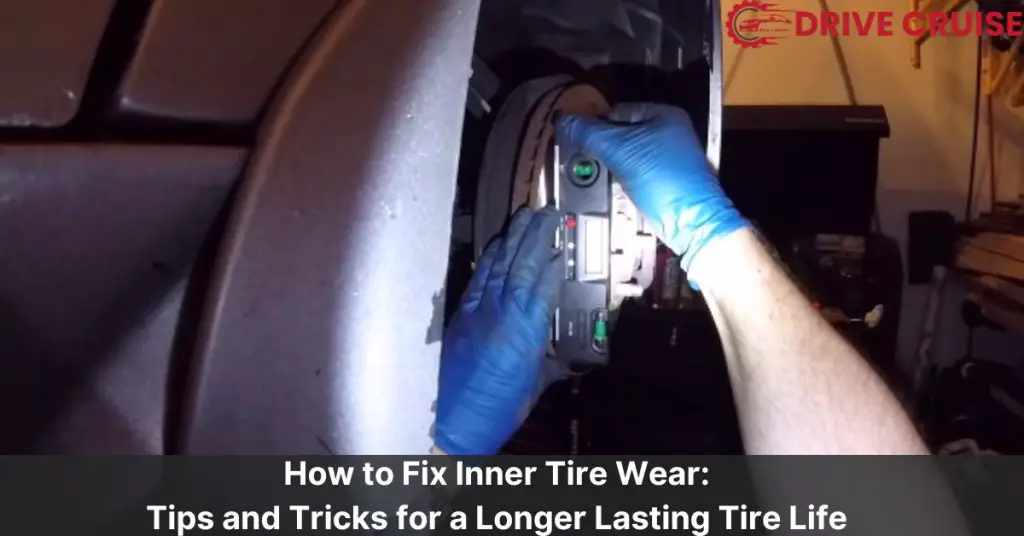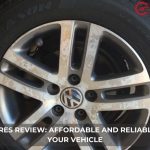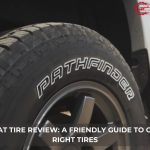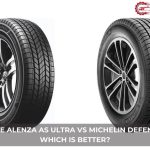If you’re experiencing inner tire wear on your vehicle, you’re not alone. Many car owners face this issue, which can cause uneven tread wear and affect the overall performance of your car. Inner tire wear is often caused by improper wheel alignment, incorrect tire pressure, negative camber, and worn or damaged suspension components like ball joints and control arm bushings.
To fix inner tire wear, it’s important to first identify the root cause. Checking your tire pressure and ensuring it matches the manufacturer’s recommendation is a good first step. You should also inspect the ball joints, suspension, and arm bushings in your car, as any of these can cause your tires to wear prematurely along the inner edge. Regular vehicle maintenance and timely checks are crucial for identifying and addressing these issues to prevent inner tire wear.
If you’re unsure how to fix inner tire wear, don’t worry. In this guide, we’ll explore effective solutions to restore even tread wear on your tires. From simple fixes like checking your tire pressure to more complex repairs like replacing worn ball joints, we’ll walk you through the steps you need to take to get your car back in top shape.
Unveiling the Culprits: Why Does Inner Tire Wear Occur?
Inner tire wear, where the tread on the inner portion of the tire wears down faster than the outer section, can be caused by several factors. In this section, we will explore the leading causes of inner tire wear and what you can do to fix it.
Misalignment:
Improper wheel alignment is a leading culprit for inner tire wear. When your wheels are misaligned, they don’t roll straight, causing them to scrub against the road surface and wear unevenly. This can be caused by hitting curbs or potholes, worn suspension components (e.g., tie rods, control arms), or improper tire installation.
To fix inner tire wear caused by misalignment, you need to have your wheels professionally aligned. This will ensure that your wheels are rolling straight and not scrubbing against the road surface, preventing uneven wear and tear.
Underinflation:
Underinflated tires flex more while driving, causing the inner tread to wear down faster. Proper tire pressure ensures optimal contact with the road and distributes weight evenly across the tread.
To fix inner tire wear caused by underinflation, you need to regularly check your tire pressure and inflate your tires to the manufacturer’s recommended pressure. This will ensure that your tires are properly inflated and distributing weight evenly across the tread.
Worn Suspension Components:
Worn suspension components like ball joints, bushings, or struts can cause the wheels to camber inwards (positive camber), leading to excessive inner tire wear.
To fix inner tire wear caused by worn suspension components, you need to have your suspension system inspected and repaired by a professional mechanic. This will ensure that your suspension system is functioning properly and not causing excessive inner tire wear.
Aggressive Cornering:
While uncommon in everyday driving, for drivers who frequently engage in aggressive cornering or high-performance maneuvers, the inner tire might experience slightly more wear due to the weight transfer during such maneuvers.
To fix inner tire wear caused by aggressive cornering, you need to adjust your driving habits and avoid high-performance maneuvers. This will ensure that your tires are not experiencing excessive wear and tear due to aggressive driving.
Reclaiming Control: Solutions for Inner Tire Wear
Before diving into solutions, it’s crucial to diagnose the cause of inner tire wear. Here’s what you can do:
Visual Inspection:
Perform a visual inspection of your tires. Look for uneven wear patterns, particularly on the inner tread. Uneven wear could indicate a problem with your wheel alignment or suspension components.
Professional Diagnosis:
Take your car to a qualified mechanic for a professional diagnosis. They can assess your wheel alignment, tire pressure, and suspension components to pinpoint the exact cause of the inner tire wear.
Once the cause is identified, here are effective solutions to address it:
Wheel Alignment:
If misalignment is the culprit, a professional wheel alignment is necessary. This ensures your wheels are positioned correctly and roll straight, preventing further uneven wear. An alignment typically costs between $50 and $150.
Proper Tire Inflation:
Inflate your tires to the recommended pressure as specified in the owner’s manual or on the placard inside the driver’s door jamb. This ensures even weight distribution and reduces inner tire wear. Regularly checking your tire pressure is an easy and inexpensive way to maintain your tires.
Replacing Worn Suspension Components:
In some cases, worn suspension components might require replacement to restore proper wheel alignment and prevent inner tire wear. Ball joints and control arm bushings are common culprits of inner tire wear. A qualified mechanic can diagnose and replace these components if necessary.
Rotate Tires Regularly:
Regularly rotating your tires (every 5,000-8,000 miles) helps distribute wear more evenly across the tread surface. This extends the life of your tires and reduces the likelihood of inner tire wear. A tire rotation typically costs between $20 and $50.
Preventing Future Inner Tire Wear: Proactive Measures
By adopting these practices, you can significantly reduce the risk of inner tire wear in the future:
Maintain Proper Tire Pressure:
Regularly check and adjust your tire pressure according to the manufacturer’s recommendations. Incorrect tire pressure can cause uneven wear patterns on your tires, including inner tire wear. You can find the recommended tire pressure for your vehicle in the owner’s manual or on a sticker located on the driver’s side door jamb.
Schedule Routine Alignments:
Have your wheel alignment checked periodically, especially after hitting curbs or potholes. Improper wheel alignment can cause inner tire wear, as well as other types of tire wear. A qualified mechanic can check your wheel alignment and adjust it if necessary.
Practice Smooth Driving:
Avoid aggressive cornering and sudden braking whenever possible. These driving habits can put extra stress on your tires and cause them to wear unevenly, including on the inside. Drive smoothly and gradually to reduce the risk of inner tire wear.
Inspect Tires Regularly:
Regularly inspect your tires for uneven wear patterns and signs of damage. Look for any bulges, cracks, or cuts on the sidewalls or tread of the tires. Uneven wear patterns, including inner tire wear, can be a sign of other problems with your vehicle, such as suspension or alignment issues. If you notice any signs of damage or wear, have your tires inspected by a qualified mechanic.
Conclusion: Prioritizing Safety and Performance
Taking care of your tires is essential to ensure your safety and the performance of your vehicle. Inner tire wear can be a safety concern, as it can lead to reduced traction and handling, making it difficult to control your car. By understanding the causes and implementing effective solutions, you can prevent inner tire wear and extend the lifespan of your tires.
Regular maintenance is crucial to prevent inner tire wear. Make sure to check your tire pressure regularly, as underinflated tires can cause uneven wear. Get your wheels aligned and rotate your tires regularly to ensure even wear. Also, inspect your suspension system regularly, as worn components can cause uneven weight distribution on your tires.









